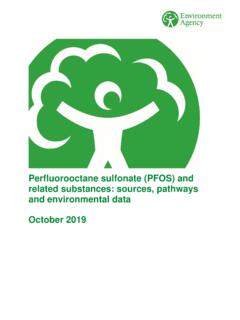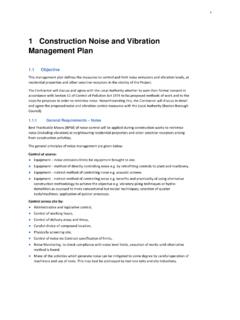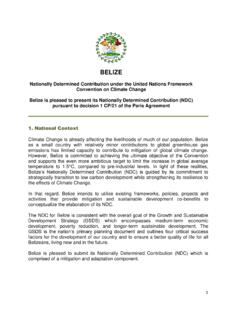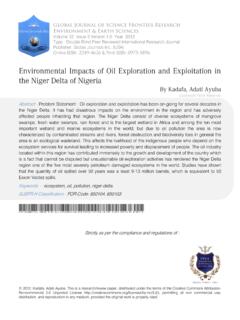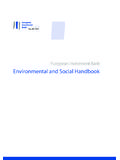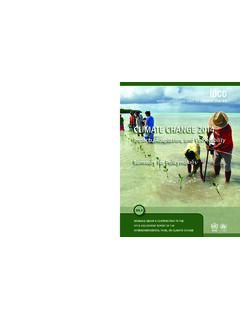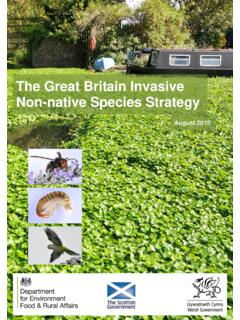Transcription of 2021 River Basin Management Plan - Environment Agency
1 2021 river basin management plan Nitrates Published: October 2019 Contents Background .. 2 Executive Summary .. 3 1. The problem .. 52. Current control measures .. 173. Potential solutions and possible approaches .. 234. Contacts .. 25 References .. 26 1 Background This summary document is one of a series of pressure focused evidence narratives. A pressure is defined as a factor affecting the water Environment . These narratives, or stories, have been produced to support the 2019 challenges and choices consultation as these pressures affect, or are affected by, the challenges described in the consultation. These pressure narratives cover chemicals, phosphorus, nitrates, fine sediment, physical modification, abstraction and flow, faecal contamination, invasive non-native species and drinking water protected areas.
2 The pressure narratives support engagement at national level and help build a common understanding of the issues. They also provide the national context for discussions at the local level during the consultation period from October 2019 for six months Relevance and accuracy of data This document has been produced by bringing together the readily available information on the topic. Quality assurance of the information included so far is not complete. As a result the document may contain some errors or inaccuracies. Please let us know of any other relevant evidence or if you are aware of any issues with the information. This will help us to build a comprehensive and robust evidence base to underpin decision-making in River Basin Management planning. Contact details are given in Section 4 of the document.
3 2 Executive Summary What are the problems with nitrate in water in general and in England? The main concerns with high concentrations of nitrate in water are: the risks to human health from drinking water after abstraction from ground or surface waters eutrophication of lowland surface waters acidification and eutrophication of upland waters nutrient enrichment in other sensitive habitats like Groundwater Dependent terrestrial ecosystems Groundwater is a major source of drinking water supply and nearly 30%of groundwater used for that purpose in England must now be blended, treated, or replaced in order to meet tap water nitrate standards. Treatment is expensive with a nitrate removal plant costing upwards of 8m. This cost is ultimately passed on to the water consumer through higher bills.
4 All groundwater bodies are Drinking Water Protected Areas where we aim to prevent any need for increased levels of water treatment. In 2015, 189 of the 271 (69%) groundwater bodies in England were found to be at risk of failing WFD objectives, mainly due to high or rising nitrate concentrations. Future risks are posed by climate change as more frequent storm events are predicted to increase nitrate losses from land to water, with hotter summers exacerbating the effect of eutrophication. What progress is being made in tackling nitrate pollution of water? Agriculture is the dominant source of nitrate in water (about 70% of total inputs), with sewage effluent a secondary contributor (25-30%) nationally. In general, nitrate concentrations are greatest in the drier, arable-dominated southern and eastern areas of England.
5 This coincides with where we are most dependent on groundwater for public water supply and base flow to rivers. 55% of England is designated as a Nitrate Vulnerable Zone (NVZ) due primarily to elevated nitrate concentrations in groundwater and rivers, and to a lesser degree because of eutrophication of estuaries and lakes/reservoirs. NVZ action programmes to reduce agricultural nitrate pollution have been in place since the late 1990s. During that time, River nitrate concentrations have seen a general reduction, but not dramatically and in the last 2 years they have risen. Groundwater nitrate concentrations are broadly stable in many places except in southern England where they are rising in some areas. This is partly because of the lag time or delay it takes for the peak agricultural nitrate loadings of the 1980-90s to percolate through the water table.
6 Recent changes in farming practice such as spreading more materials on land also have the potential to greatly increase nitrate loading locally. Further work is needed to consider the implications of land spreading. What is needed for the future? Because of the time lag issue precluding water quality improvements being realised for decades, meeting Water Framework Directive (WFD) objectives for nitrate is challenging, particularly for groundwater. However, irrespective of this, the current measures appear insufficient to deliver WFD objectives in the long term and a review of the policy options appears to be needed. 3 Targeting measures to where they can be most effective would have most value, in terms of improvements to water quality, uses and associated costs. This could mean, for example, targeting: catchments used for public drinking water abstraction that are at risk of deteriorating to the point that treatment must be introduced or increased, requiring additional capital expenditure drinking water protected areas where significant numbers of small or private water supplies from groundwater are particularly at risk The Farming Rules for Water and Nitrate Vulnerable Zones form the regulatory baseline.
7 Catchment schemes, safeguard zone action plans and the proposed new Environmental Land Management Scheme (ELMS) will have important roles to play in securing the necessary improvements as far as this is feasible. 4 1. The problem Evidence for the problem The total amount of reactive, or biologically available, nitrogen created by human activities has increased significantly between 1890 and 1990, with most of that increase taking place in the second half of the twentieth century as a result of the global increase in use of fertilisersi. This has led to increased nitrate concentrations in rivers, lakes, ground waters, transitional and coastal waters and wetlands. There are multiple standards and objectives for nitrate for different EU Directives and water categories, making implementation of controls complex.
8 We need to consider the following directives and associated domestic regulations in relation to nitrate control: Urban Waste Water Treatment Directive (UWWTD) Nitrates Directive Water Framework Directive (WFD), in particular WFD Article 7 that concerns no deterioration of water quality in Drinking Water Protected Areas (DrWPAs) Drinking Water Directive Groundwater Directive (GWD). The main concerns with nitrate in water are: the risks to human health from drinking water with elevated nitrate concentrations of nitrate, after abstraction from ground or surface waters (the World Health Organisation standard is 50 mg/l nitrate at the tap) eutrophication of lowland surface waters including estuaries and coastal waters acidification and eutrophication of upland waters the impacts on nutrients on Groundwater Dependent terrestrial ecosystems The extent of Nitrate Vulnerable Zones (NVZs) designated under the Nitrates Directive regulations is a good measure of the extent of nitrate pollution nationally, particularly in lowland areas: 44% of land in England is NVZ because rivers breach the 50 mg/l test.
9 25% of England is NVZ because groundwater breach the 50 mg/l test. 6% of England is NVZ because of eutrophication is estuaries and lakes/reservoirs. These designations overlap resulting in 55% of England being NVZ. Nitrate in rivers and lakes Figure 1 displays the increase in nitrate over time in the River Thames with a peak around the mid-1970s - similar trends are seen in other UK riversii. 5 Figure 1. Nitrate (mg NO3 N/L) concentrations in the River Thames (1860-2010)iii Under the Water Framework Directive we must identify Drinking Water Protected Areas and, if there is a risk of deterioration, put in place measures that aim to reduce the level of purification treatment in producing drinking water. In England, there are 12 surface water bodies identified as failing the WFD Article 7 'no deterioration' objectiveiv) due to high levels of nitrate.
10 Nitrogen compounds, such as nitrate and ammoniacal nitrogen, are the reason that 70 groundwater DrWPAs are classed as being at poor chemical status. Within those 70, there are 227 Safeguard Zones (SGZ) aimed at reducing deterioration. Nitrate in drinking water is also expensive to treat. A new nitrate removal plant for groundwater can cost some 8m for example, with annual running costs of some 250k. These costs are ultimately funded by water consumers. Elevated nitrate can also affect the ecological quality of surface waters through the process of eutrophication. This is when excess nutrients cause algal/plant proliferation, damaging the quality and uses of waters as well as the ecology. Nitrate is generally the main nutrient involved in eutrophication of estuaries and coastal waters.
